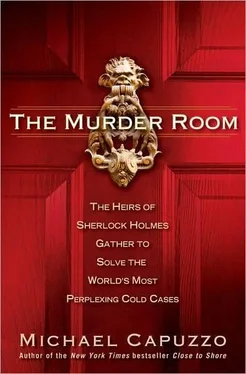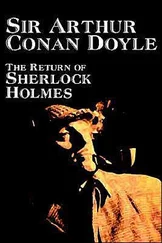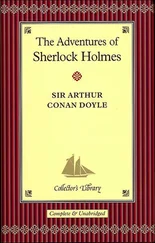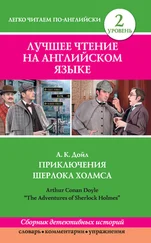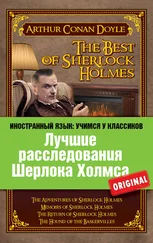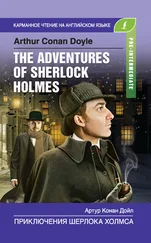“Her success doesn’t surprise me,” Walter told English. “I always said she was extremely intelligent-psychopathically bright and charming. But the nursing school is really quite rich. If you’re accused of being a murderess, draped in the black robes of torture, how do you ritually cleanse yourself of all suspicion? You enrobe yourself in white and become a healer.”
Walter saw Hamilton as a brilliant and cunning adversary, “a highly skilled psychopath.” She had gotten away with murder for years. She had brazenly killed Scott Dunn, toyed with his father, manipulated lawyers, cops, and the justice system as easily as she had a parade of lovers. She had seduced and bullied a whole circle of men, through raw sexual power and intimidation, to assist her in murder. The waitress had destroyed her betrayer in the very bedroom where he had deceived her-a waitress rising to the role of a vengeful queen.
She was a poor woman’s Clytemnestra, the queen who slew King Agamemnon for his affair with the prophetess Cassandra, striking him in their royal bed with a “threefold hammer blow.”
Curious, Walter found his old college copy of Agamemnon by Aeschylus, “The Father of Tragedy,” and thumbed through the ancient Greek classic to the murder scene. It caused him to raise an eyebrow:
She goes down, and the life is bursting out of him-
Great sprays of blood, and the murderous shower
Wounds me, dyes me black and I, I revel
Like the Earth when the spring rains come down,
The blessed gifts of god, and the new green spear,
Splits the sheath and rips to birth in glory!
It was murder as self-improvement seven centuries ago. Clytemnestra, like Leisha, had blossomed “… from that drenching marriage-rite the woods, the spring burst forth in bloom. And I, I cause it all.”
The profiler judged the drawing worth adding to his collection of original murderers’ art, which came in handy as a teaching tool. It included a watercolor by an Australian male nurse-turned-serial killer and a classic portrait of Pogo the Clown by John Wayne Gacy, the Chicago contractor, Democratic ward heeler, and clown-for-hire at children’s parties convicted in 1980 of murdering thirty-three men and boys and burying most of them under the floorboards of his house.
Jim Dunn was devastated by the documentation of his son’s torture and the idea that the perpetrator of torture not only got away with murder but was using it to inspire personal achievement and growth. It gave him the defeated feeling that “Leisha wins in the end.”
“Not at all,” Walter said. “By attempting to reinvent herself and escape her past, she only further identifies herself as the murderer. Leisha is a drama queen, a remarkable woman, in an evil way, for a trailer-trash waitress. But she’s not especially well-educated, and she doesn’t seem to realize that dramas end in tragedy.”
It deeply offended Walter that “a bunch of psychopaths were getting away with murder. They were trying to pass over the ruse on society that Scott Dunn had just disappeared as if he had never existed. There are standards to uphold in civilization. This kind of thing cannot be allowed to stand.” The police weren’t buying his conspiracy theory, but Walter was convinced Mike Roberts, a muscular six-foot-four young man who worked with Scott, knew something about the murder.
Roberts had quit the Lubbock stereo shop shortly after Scott’s disappearance and moved to Tacoma, Washington -classic post-crime behavior. While on business in Seattle, Walter made a side trip. He asked the police to pull Roberts out of his workplace onto the sidewalk, then sent the cop to get some coffee.
“It’s time for us to have a man-to-boy chat,” Walter said, leaning close to the muscular young man. One of Roberts’s shirt buttons had come undone, and Walter observed his heart thumping wildly against his chest.
Roberts jumped back. “I remember you-the Englishman. I’m scared of you. Should I get myself a lawyer?”
Walter noted Roberts was “a fine liar, never losing eye contact,” but the tall man’s jumpy Adam’s apple gave him away as well, slithering up and down “with great rapidity.”
“Young man.” He glared. “If you have not been involved in murder, you needn’t call a lawyer. If you have been involved in murder, however, I daresay a lawyer won’t help. I’ll chew your dick down so far you won’t have enough left to fuck roadkill!”
CHAPTER 37. THE STRANGER IN BIDDLE HOUSE
The mansion in the remote Pennsylvania Appalachians was filled with the gloaming of twilight, except for the lamp in the parlor where the thin man lounged on an eighteenth-century Italian divan, a king Kool perched in two fingers haughtily aloft. “Oh, it’s a wonderful case,” Richard Walter said, as he glanced at a photograph of the doctor who had been shot through the heart by his best friend, a lawyer, some twenty years earlier. “A man desires another man’s wife and simply takes her. It’s quite common. It happens to be the plot of the novel The Talented Mr. Ripley, as well as, I might add, Hamlet.”
“I see retirement hasn’t affected your confidence,” snickered state trooper Steve Stoud, a dark-haired, broad-shouldered man in his thirties sitting in a wing chair opposite Walter. Corporal Stoud’s brilliant cold-case work had recently put the murderous doctor behind bars, and earned him membership as one of the young lions of an aging Vidocq Society.
Walter laughed-laughter that dissolved into a hacking cough that left him bent over red-faced like he was expelling a lung. His smoker’s cough was getting worse.
Night fell with the utter darkness of the country and the hush of the surrounding ridge-and-valley Appalachians. The parlor was the largest of twenty-two rooms in the Greek Revival mansion. There were seven bedrooms and seven fireplaces, rumors of ghosts and the Underground Railroad. A grand stairway soared for the needs of society; back stairs shuttled servants from sight. It was Biddle House, a country retreat built in the 1830s by the illustrious Biddles of Philadelphia, including Nicholas Biddle, the disgraced president of the Second Bank of the United States, his bank and his career destroyed by President Andrew Jackson. Walter lived in the house alone.
“Didn’t a doctor just tell you to quit?” Stoud teased.
“Yes.” Walter frowned. “I told him, ‘My dear boy, I am quite obviously aware of the risks and pleasures of smoking, and you see I have made a bargain with which I am quite pleased-I had a choice of being a thin man and enjoying life or being too fat to fit into my coffin. So let nature do what she will, I will have the last word-with sodium pentothal one can lie down to quite pleasant dreams…’ ”
Stoud shook his head. “Jesus, Richard.”
“I explained that I am a Scorpio, one who would rather destroy himself than lose control, and one who thrills to attack.”
As he composed himself and took a sip of Chardonnay, Stoud, big hand around a can of beer, said in a teasing voice, “Richard, speaking of suicide, I’ve found a note…”
“Oh.” The thin man leaned forward expectantly, his left eyebrow arched in a fine point. The two men collected suicide notes. It was a friendly competition.
“A guy in Georgia shot himself in the head, left a note, ‘Some say death is the end of life. Some say life is part of death.’ I say, ‘Let’s put the fun back in funeral!’ ”
Walter’s eyes shone with merriment. “Oh, that’s wonderful,” he enthused. “The best yet. I quite like it.” It illustrated the kind of point the police had such trouble accepting: At the dark edges of human behavior, the cruel and the tortured did not think or feel like the rest of us. Murder could be fun! Suicide could be a joke!
Читать дальше
